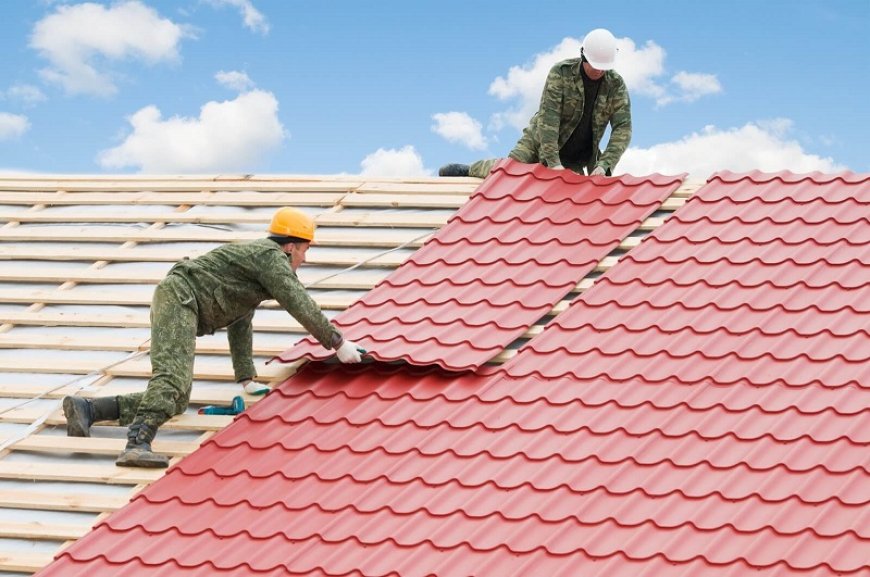What are the Top 5 Roofing Materials?
Discover the best roofing material for your home! roofing installation Compare asphalt, metal, wood, slate, and tile roofs based on cost, durability, style, and more. Find the perfect roof for your needs.

Choosing the right roofing material for your home is a significant decision that can impact its appearance, durability, and energy efficiency. With a plethora of options available, it can be overwhelming to determine the best fit for your needs. This article will delve into the top five roofing materials, highlighting their pros, cons, and ideal applications. Best roofing installation services in Plano TX get their services.
Asphalt Shingles The Classic Choice
Asphalt shingles remain the most popular roofing material due to their affordability, ease of installation, and wide range of styles. They offer a good balance of cost and durability, making them a suitable option for many homeowners.
Pros
Cost-effective, easy to install, various styles and colors, relatively lightweight.
Cons
Shorter lifespan compared to other materials, susceptible to damage from strong winds and hail, not the most environmentally friendly option.
Best for
Most residential homes, especially those in areas with moderate climates.
Metal Roofing is Durable and Eco-Friendly
Metal roofing has gained popularity in recent years due to its exceptional durability, longevity, and eco-friendliness. While initially more expensive than asphalt shingles, metal roofs often recoup their cost through increased property value and long-term savings.
Pros
Extremely durable, long lifespan, fire-resistant, energy-efficient, eco-friendly, various styles and colors.
Cons
Higher initial cost, noise can be an issue in heavy rain or hail, and professional installation is required.
Best for
Homes in areas prone to extreme weather conditions, coastal regions, and homeowners seeking a low-maintenance, long-lasting roof.
Wood Shingles and Shakes Natural Beauty and Character
Wood shingles and shakes offer a timeless, rustic appeal that can enhance the curb appeal of your home. However, they require more maintenance than other materials and are susceptible to fire and rot.
Pros
Natural beauty, excellent insulation, long lifespan with proper maintenance.
Cons
High cost, requires regular maintenance, fire risk, susceptible to rot and insects.
Best for
Homes with a traditional or rustic style, homeowners willing to invest in regular maintenance.
Slate's Timeless Elegance and Exceptional Durability
Slate roofing is a premium option known for its unmatched durability, fire resistance, and aesthetic appeal. While it comes with a hefty price tag, slate roofs can last over a century, making them a worthwhile investment for many homeowners.
Pros
Extremely durable, long lifespan, fire-resistant, low maintenance, high-end appearance.
Cons
Very high cost, heavy weight requiring additional structural support, professional installation required.
Best for
Historic homes, upscale properties, and homeowners seeking a luxurious and long-lasting roof.
Tile Roofing Low Maintenance and Fire Resistance
Tile roofs offer a combination of durability, fire resistance, and aesthetic appeal. They are available in clay and concrete varieties, each with its own set of benefits and drawbacks.
Pros
Durable, fire-resistant, low maintenance, various styles and colors.
Cons
High cost, heavy weight requiring additional structural support, professional installation required.
Best for
Mediterranean or Spanish-style homes, areas with high fire risk, and homeowners seeking a long-lasting roof.
Factors to Consider When Choosing a Roofing Material
When selecting a roofing material, several factors should be considered:
- Climate: Consider your local climate and the types of weather your roof will endure.
- Budget: Roofing materials vary widely in cost, so determine your budget before making a decision.
- Home Style: The roofing material should complement the architectural style of your home.
- Durability: Consider the expected lifespan of the material and the level of maintenance required.
- Energy Efficiency: Some roofing materials offer better energy efficiency than others.
By carefully evaluating these factors and considering the pros and cons of each material, you can make an informed decision that best suits your home and lifestyle.
Conclusion
Selecting the right roofing material is essential for protecting your home and enhancing its curb appeal. While asphalt shingles remain a popular choice, metal, wood, slate, and tile roofs offer unique advantages. Ultimately, the best roofing material for you depends on your individual needs, preferences, and budget.
FAQs
How often should I replace my roof?
The lifespan of a roof varies depending on the material, climate, and maintenance. Asphalt shingles typically last 15-20 years, while metal roofs can last 40-75 years or more.
Can I install a new roof over an old one?
In some cases, it's possible to install a new roof over an old one, but it's generally not recommended. Removing the old roof allows for proper inspection and ventilation.
What is the most energy-efficient roofing material?
Metal roofing is generally considered the most energy-efficient option due to its reflective properties.
How much does a new roof cost?
The cost of a new roof varies significantly based on the material, size of your roof, and labor costs. It's best to get quotes from multiple roofing contractors.
What is the best time of year to replace a roof?
Spring and fall are generally considered the best times to replace a roof due to moderate weather conditions.












